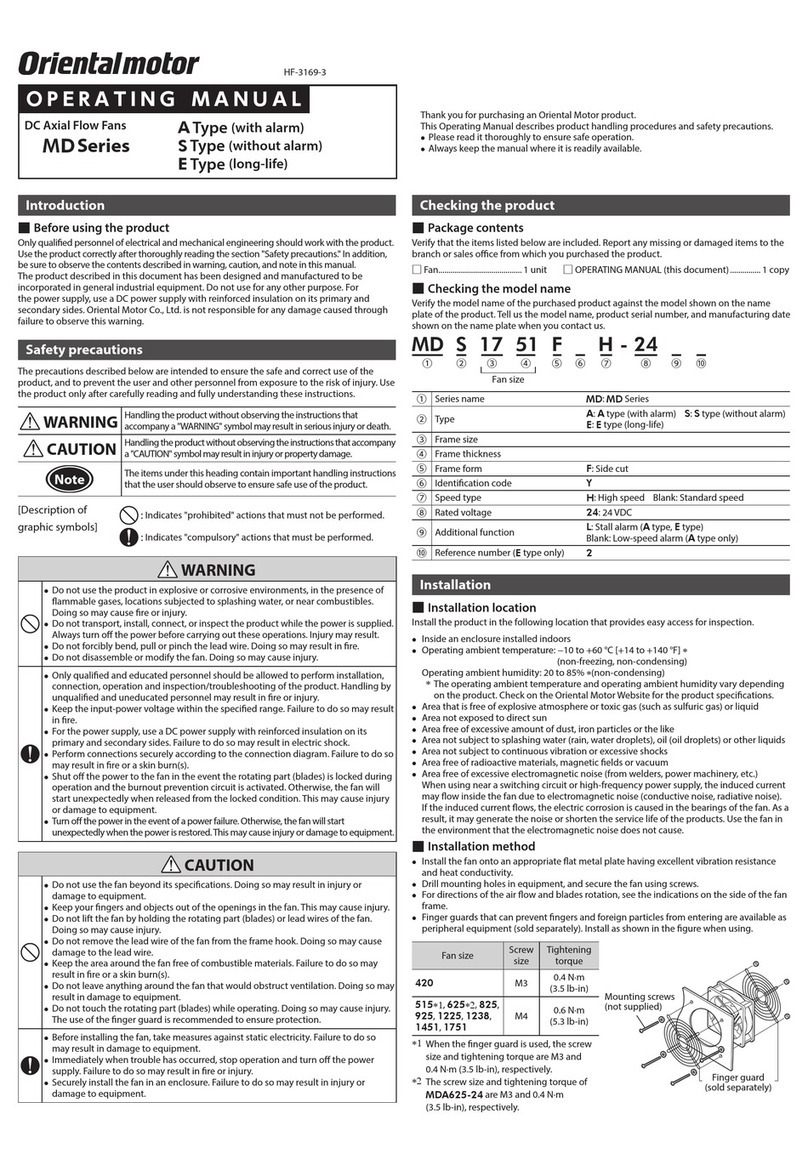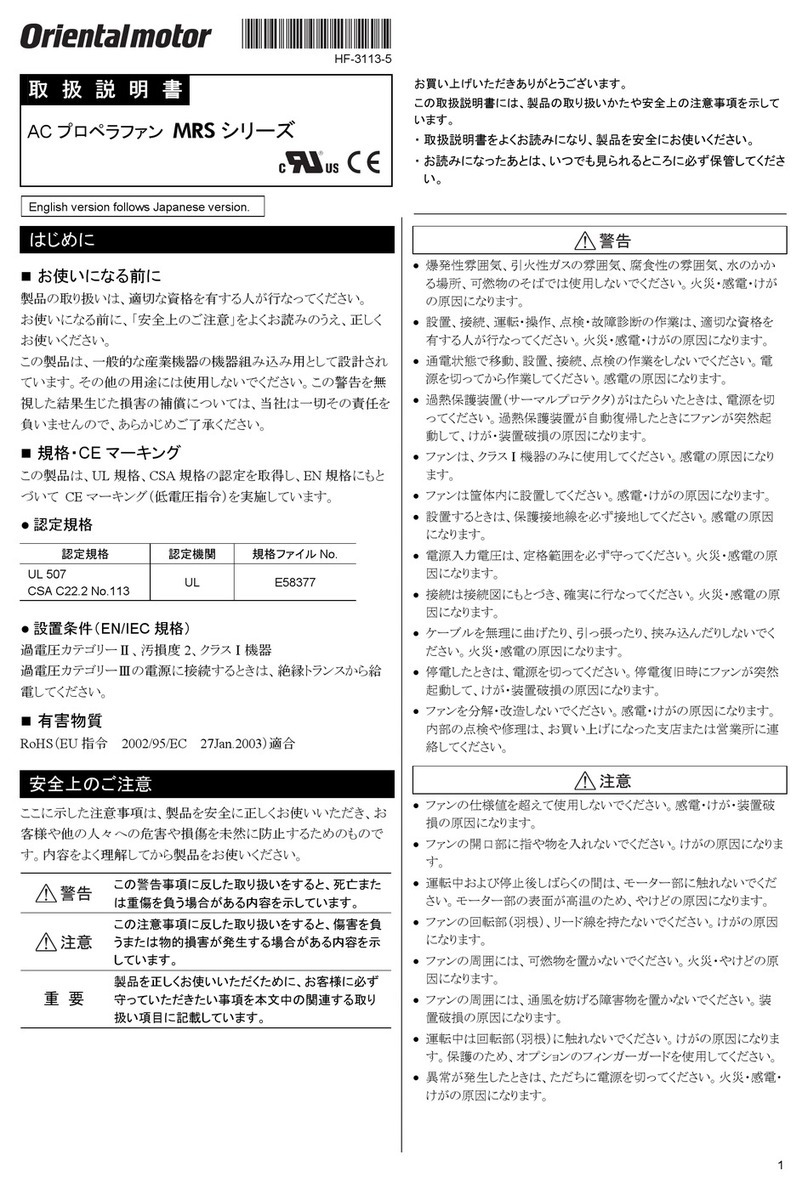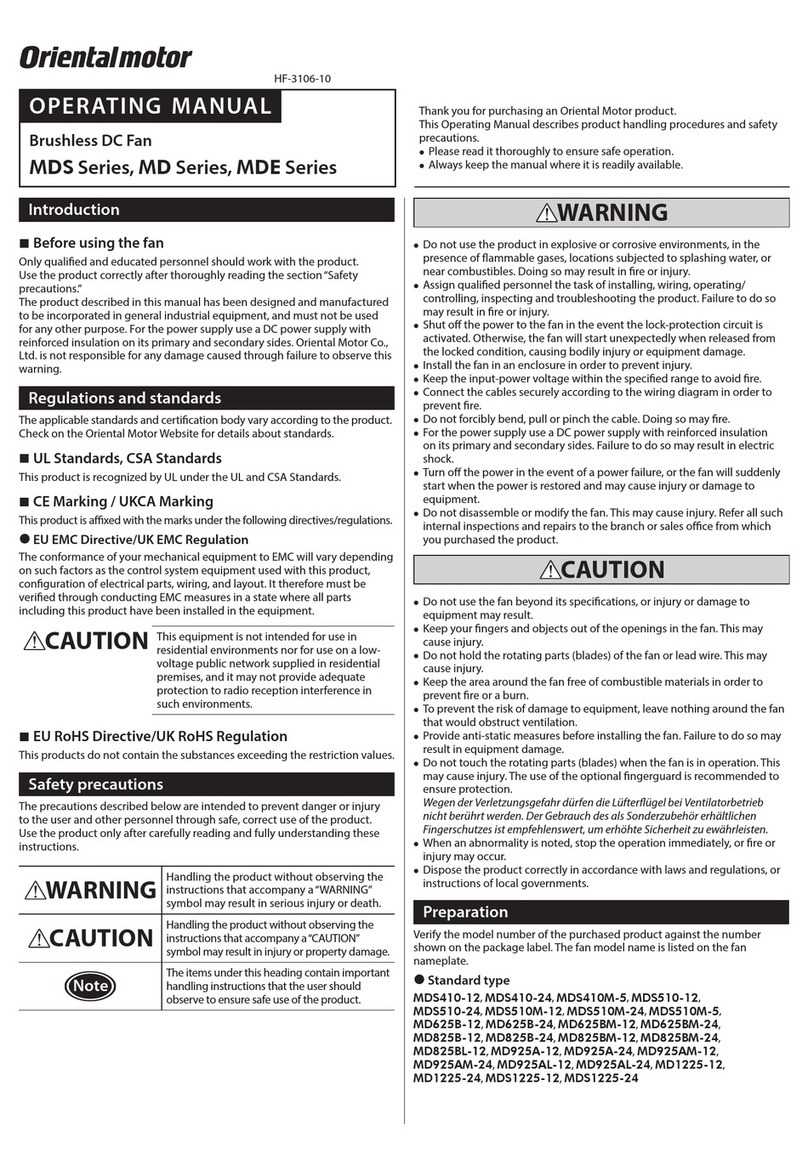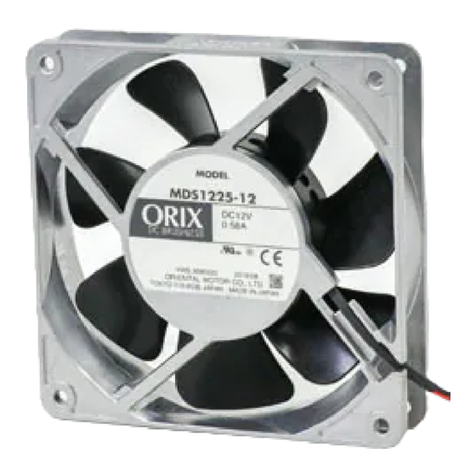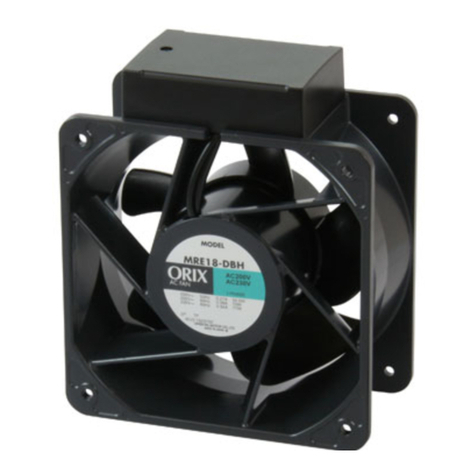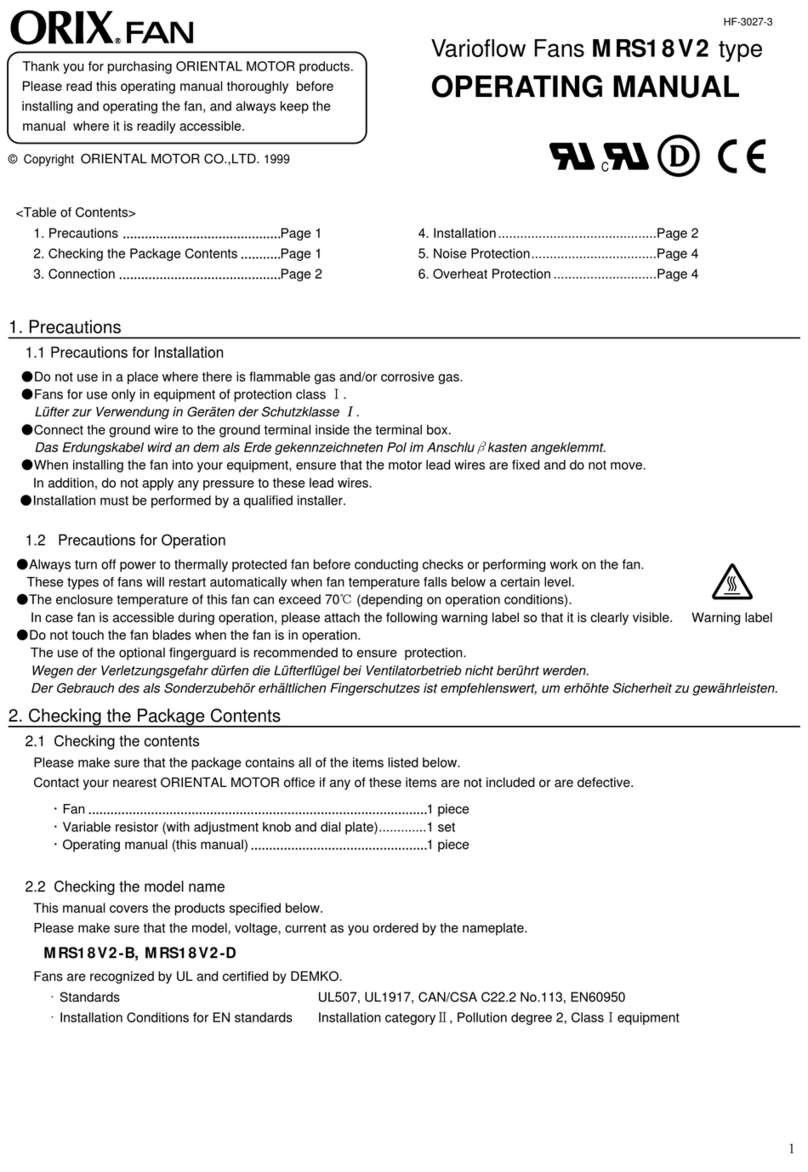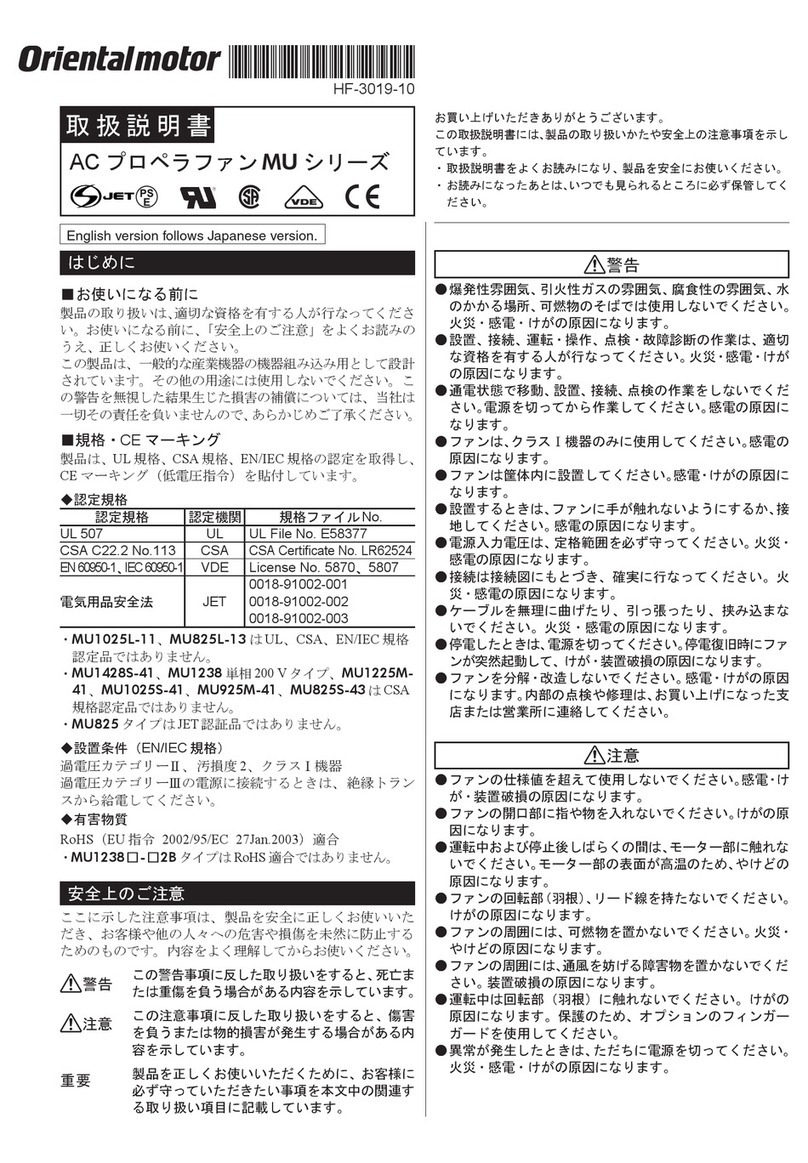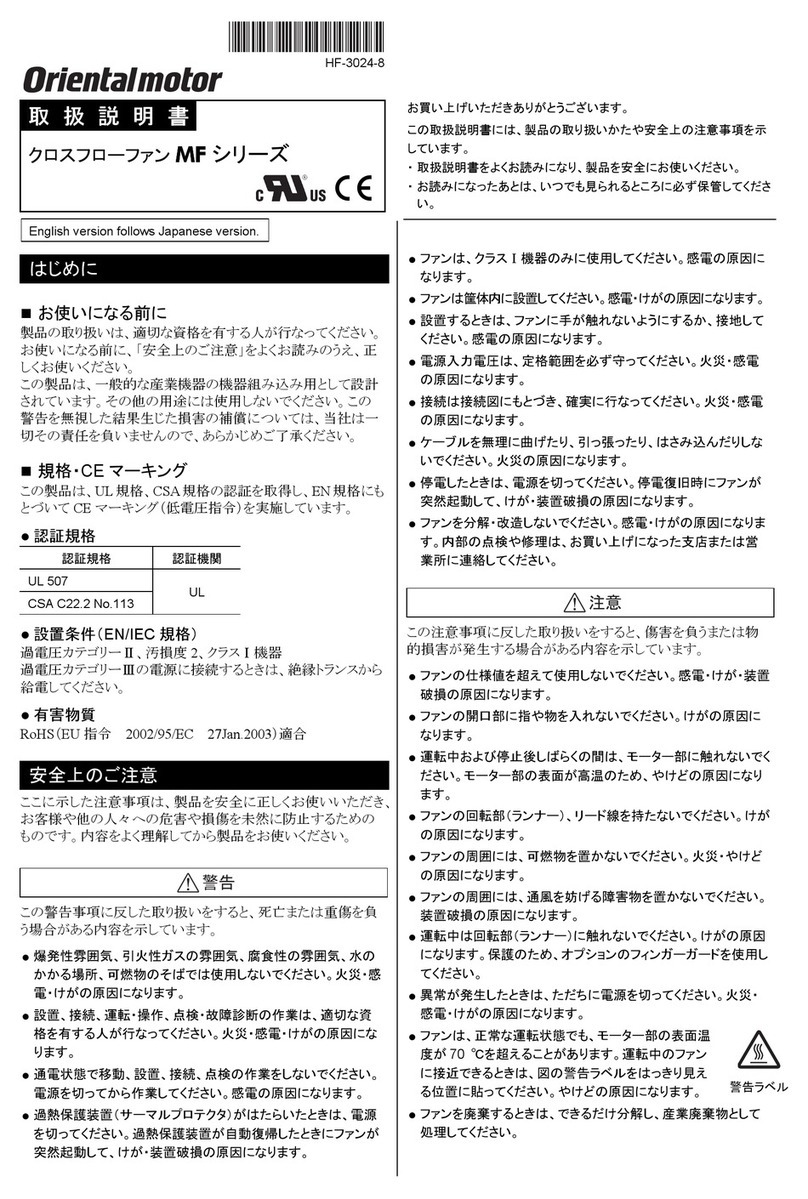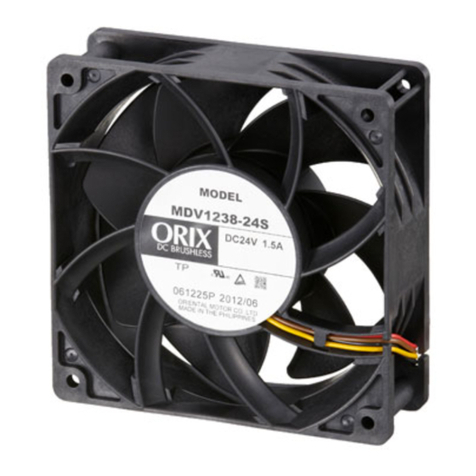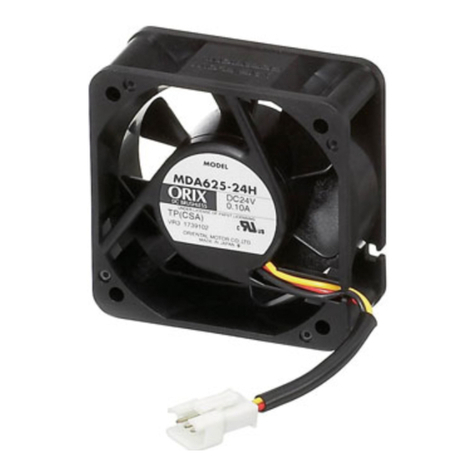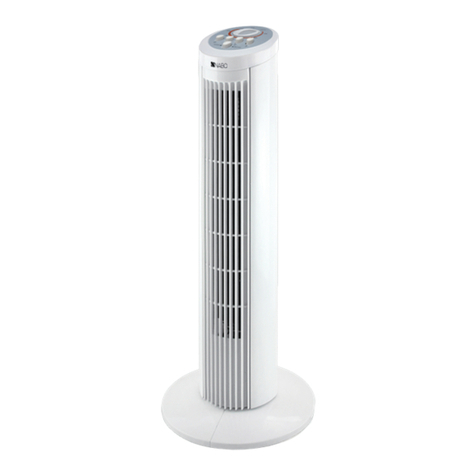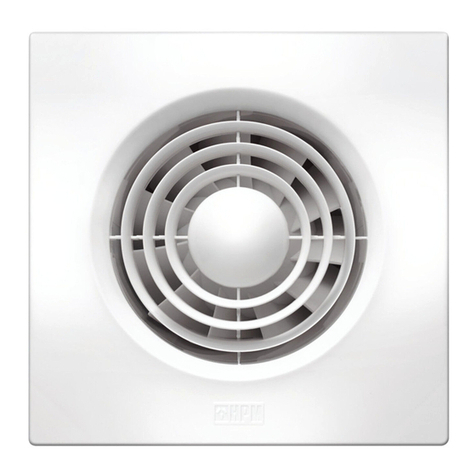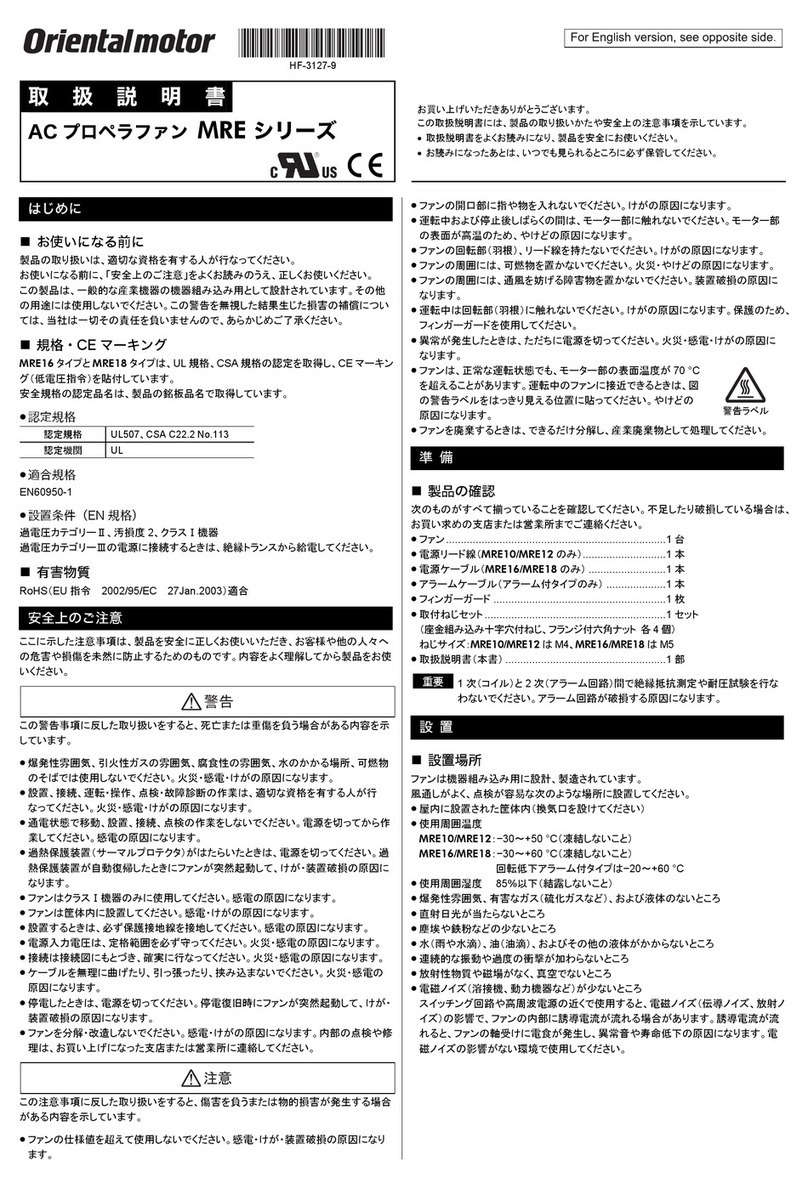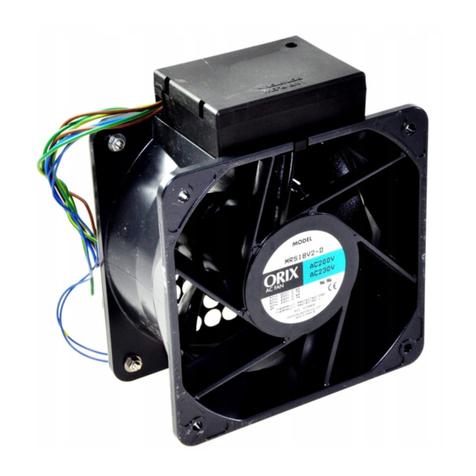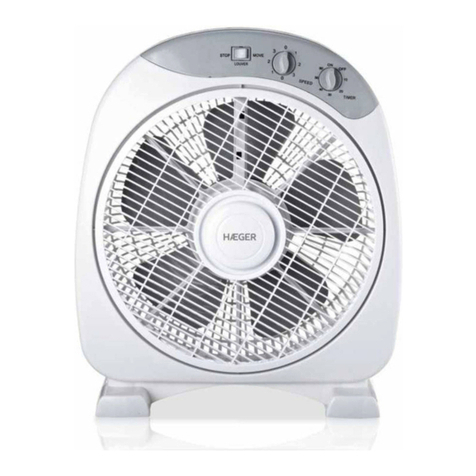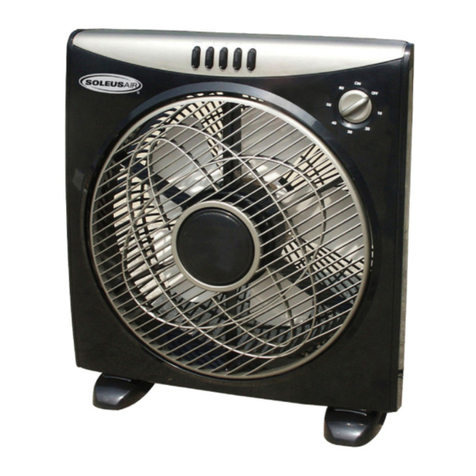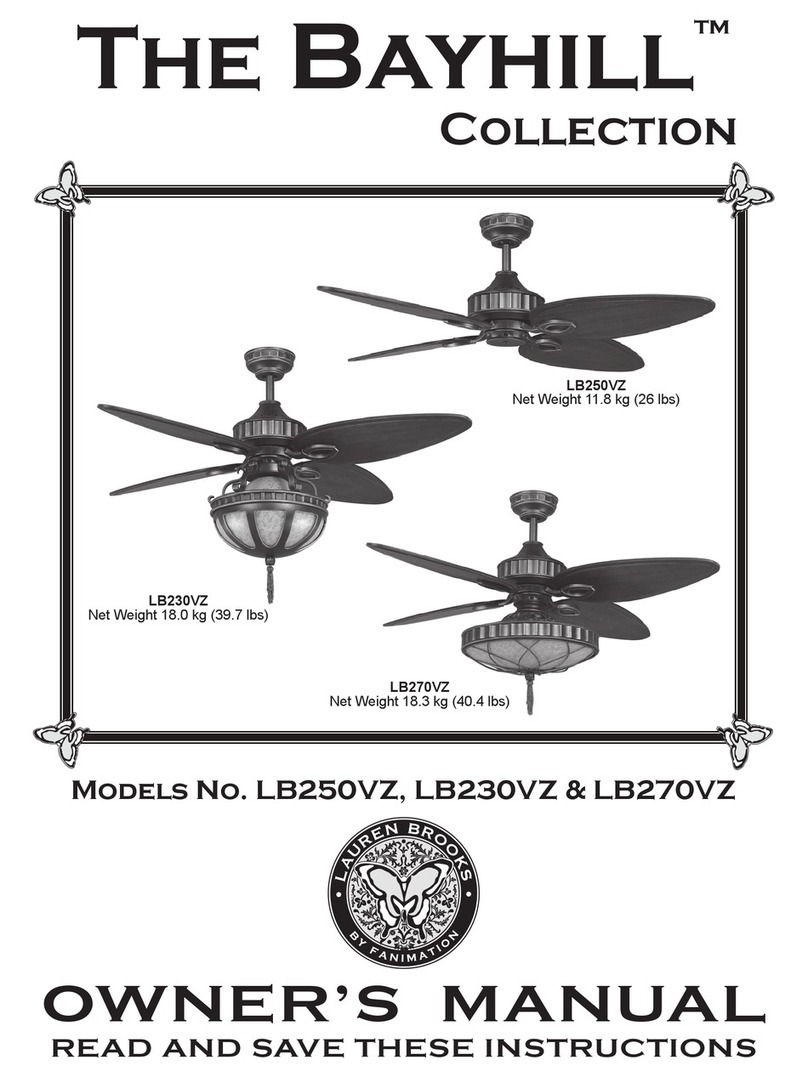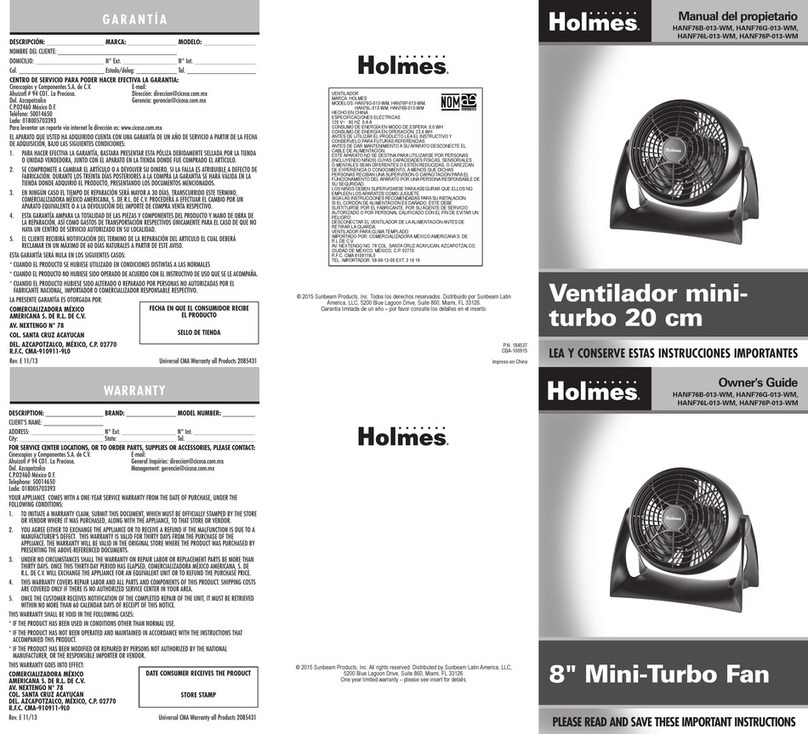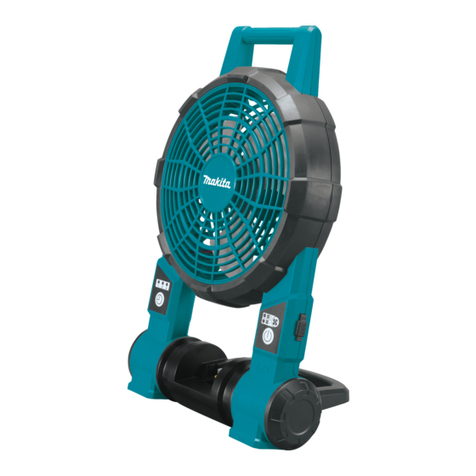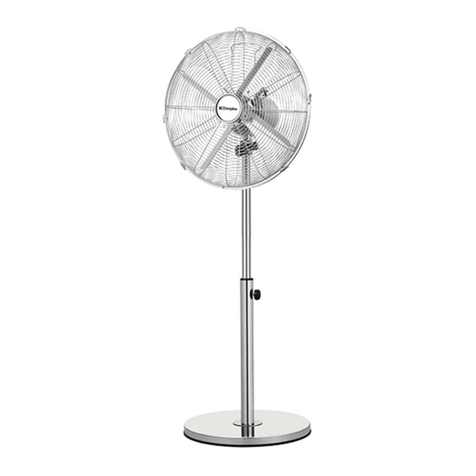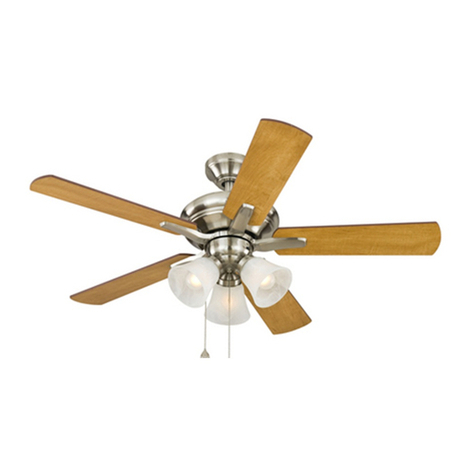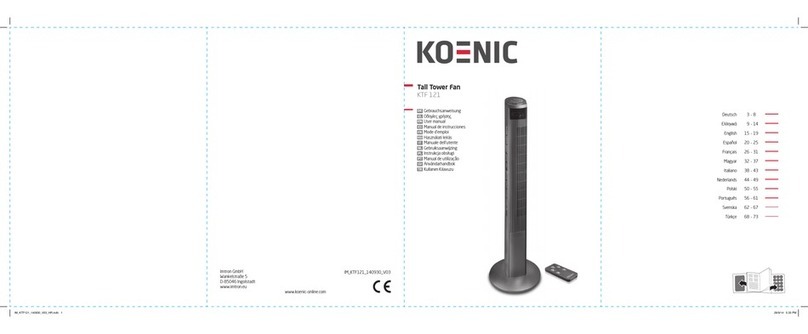
Type Model
Long life models
(Stall alarm, electronic alarm type)
MDE1451-24L2
MDE1451-48L2
MDE1751-24L
MDE1751F-24L
Installation
Location for installation
The fan is designed and manufactured for installation in equipment.
Install it in a well-ventilated location that provides easy access for inspection.
The location must also satisfy the following conditions:
• Inside an enclosure that is installed indoors (provide vent holes)
• Operating ambient temperature
−10 to +60 °C (+14 to +140 °F) (non-freezing)
• Operating ambient humidity 85% or less (non-condensing)
• Area that is free of explosive atmosphere or toxic gas (such as sulfuric gas)
or liquid
• Area not exposed to direct sun
• Area free of excessive amount of dust, iron particles or the like
• Area not subject to splashing water (rains, water droplets), oil (oil
droplets) or other liquids
• Area not subject to continuous vibration or excessive shocks
• Area free of radioactive materials, magnetic fields or vacuum
• Area free of excessive electromagnetic noise (from welders, power
machinery, etc.)
When using near a switching circuit or high-frequency power supply, the
induced current may flow inside the fan due to electromagnetic noise
(conductive noise, radiative noise). If the induced current flows, the
electric corrosion is caused in the bearings of the fan. As a result, it may
generate the noise or shorten the service life of the products. Use the fan in
the environment that the electromagnetic noise does not cause.
How to install the fan
• Install the fan onto an appropriate flat metal plate having excellent
vibration resistance and heat conductivity.
• Drill holes on the mounting plate and fix the fun on the plate using screws
(not supplied).
Screw size: M4
Tightening torque: 0.6 N·m (5.3 lb-in)
• For air orientation and rotational direction, see the indications shown on
the fan’s side frame.
Connecting the power supply
Wiring diagram
Red
Black
DC power supply
GND
+
Check the voltage specification on the product identification plate and input
the correct voltage.
Connection of the alarm/sensor
Stall alarm, electronic alarm type
The orange or yellow wire is lead wire for the alarm circuit. GND is common
to the sensor and power supply.
If the fan stalls while the power is on, an alarm signal is output.
Orange
or
yellow
Black
Fan Client's circuit
GND
27.6 VDC or less∗
R
0 V
5 mA
or less
∗㩷MDS1451 type, MDE1451 type = 30 VDC or less
Note The stall alarm type of fan is not equipped with a delayed
trip-point alarm circuit. Therefore, an external delay function
is necessary to avoid the detection of fan start. The set time
of the delay function should be at least one second.
Low-speed alarm, contact alarm type
The white and blue wires are lead wires for the alarm circuit.
An alarm (H level) signal is output when the fan’s rotation speed falls below
1800±400 r/min.
White
Blue
Fan
Client's circuit
R
30 VDC or less
0 V
30 mA
or less
Note The low-speed alarm type of fan is equipped with an
internal delayed-start alarm circuit. The alarm function
becomes effective within 10 seconds of the fan start.
Pulse sensor type
The yellow wire is lead wire for the pulse output. GND is common to the
sensor and power supply.
Two cycles of rectangular waves are output per rotation.
∗㩷MDS1751-24S = 10 mA or less
Yellow
Black
Fan Client's circuit
GND
30 VDC or less
R
0 V
5 mA
or less∗
Overheat protection
The fan is equipped with an internal protective circuit against overheating. In
the event a lock-up condition is detected, this function automatically controls
the current flow to the fan motor’s windings, thus preventing the fan blades
from locking and burning out. The fan resumes operation automatically as
soon as it is released from the locked condition. Be sure to shut off the power
to the fan before performing an inspection.
• Unauthorized reproduction or copying of all or part of this manual is
prohibited.
• Oriental Motor shall not be liable whatsoever for any problems relating
to industrial property rights arising from use of any information, circuit,
equipment or device provided or referenced in this manual.
• Characteristics, specifications and dimensions are subject to change
without notice.
• While we make every effort to offer accurate information in the
manual, we welcome your input. Should you find unclear descriptions,
errors or omissions, please contact the nearest office.
• and are registered trademarks or trademarks
of Oriental Motor Co., Ltd., in Japan and other countries.
© Copyright ORIENTAL MOTOR CO., LTD. 2012
• Please contact your nearest Oriental Motor office for further information.
Headquarters Tokyo, Japan
Tel:03-6744-0361 Fax:03-5826-2576
Tel:01 47 86 97 50 Fax:01 47 82 45 16
Tel:(02)8228-0707 Fax:(02)8228-0708
Technical Support Tel:(800)468-3982
8:30
A.M.
to 5:00
P.M.
, P.S.T. (M-F)
7:30
A.M.
to 5:00
P.M.
, C.S.T. (M-F)
E-mail: techsupport@orientalmotor.com
www.orientalmotor.com
Headquarters and Düsseldorf Office Tel:0211-52067-00 Fax:0211-52067-099
Munich Office Tel:089-3181225-00 Fax:089-3181225-25
Hamburg Office Tel:040-76910443 Fax:040-76910445
Tel:01256-347090 Fax:01256-347099
Tel:02-93906346 Fax:02-93906348
Tel:+65-6745-7344 Fax:+65-6745-9405
KOREA
Tel:080-777-2042 Fax:02-2026-5495
Tel:(03)22875778 Fax:(03)22875528
Tel:+66-2-251-1871 Fax:+66-2-251-1872
Tel:400-820-6516 Fax:021-6278-0269




